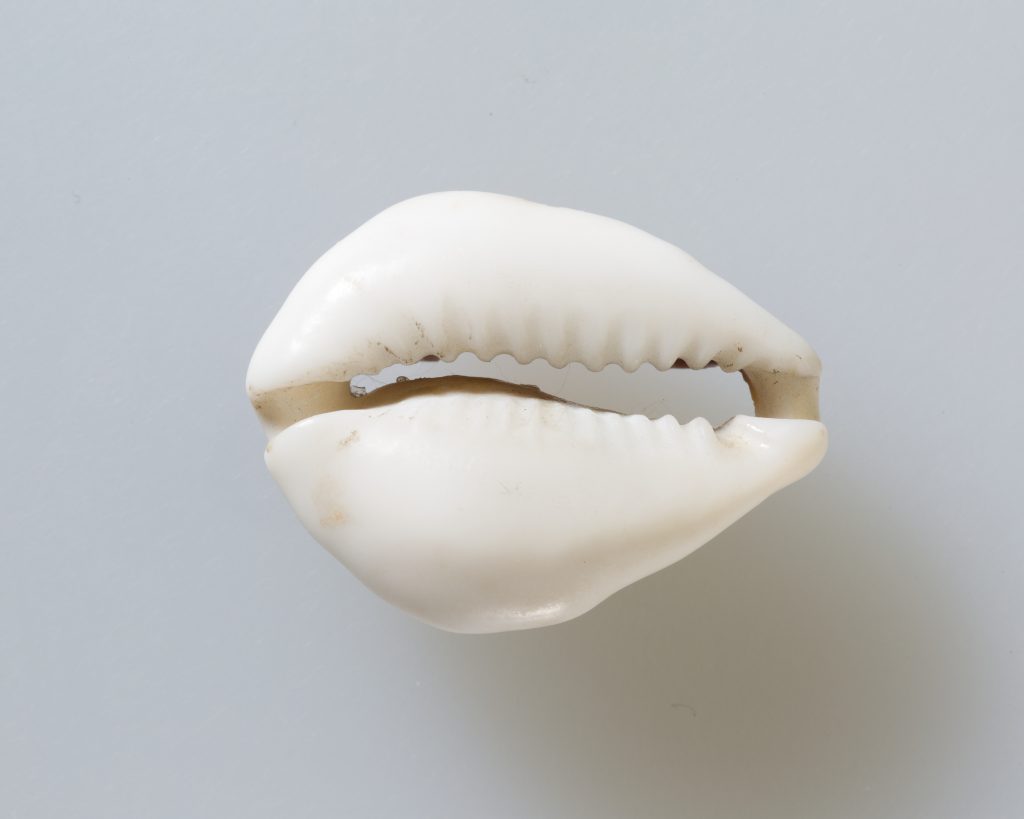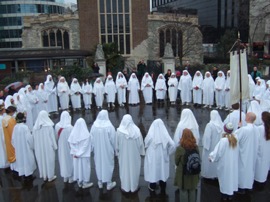Cowrie shells are the shells of small marine snails that are widely distributed in warm seas. Their texture is very smooth due to their glossy finish, and they come in various shapes, patterns, and colors. Although we simply use them for a collection, Cowrie shells had many uses and purpose in ancient times, particularly in ancient Egypt.
In ancient Egypt, women were highly valued for their ability to conceive children. In order to protect their fertility for the future, girls and young women wore Cowrie girdles. They would also be worn during pregnancy in order to protect their child from any harm or complications, and have a safe and successful delivery. It was also believed that women and children in ancient Egypt were often the targets of the so-called evil eye, an evil spirit that would haunt them and was the blame for miscarriages and deaths. The only way to stay protected from the malicious effects of the superstition was by wearing Cowrie shells every day for the rest of their lives. Even when Egyptian women died, they were often buried with a Cowrie shell necklace to protect their spirits in the after life. Cowrie girdles were often adorned by a small naked female that represented the goddess of fertility, and she protected pregnant women throughout their pregnancies. Even though pregnant women were often visited by female birth attendants to make sure that their pregnancy was going well, the Cowrie shells gave them an added sense of protection. After examining the remains of numerous mummies, Egyptian scholars have concluded that Egyptian females must have had fertility difficulties due to their lack of medicine and resources. Those scholars conclude that these women must have depended on their belief in the power of these Cowrie shells. The shape of the Cowrie shell was even thought to symbolize a woman’s pregnancy due to its round shape, seen as similar to a woman’s pregnant belly as the child grows. The vertical opening in the middle of the shell represents the female vulva, which is the main reproductive organ of the woman.1

Gold | Courtesy of the Metropolitan Museum of Art, New York
Cowrie shells in ancient Egypt were also known to be used for decoration purposes. In the tombs of small children, the Cowrie shells were placed around tombs for decoration purposes. There were two very different designs, one for the girls and one for the boys. They were thought to offer a connection between the living and the dead. Cowrie shells were also very valuable, and they were used as jewelry as well, and as home décor. The more Cowrie shells one had, the wealthier one was thought to be, and the more respect one was accorded by the people. Because of their high value, Cowrie shells were commonly used as currency; and they traded the shells for things like food, clothing, and other necessities. In the homes of the Egyptians, there were animal figures that were covered with Cowrie shells. The jewelers who created the decorations and the necklaces used metals to fill the Cowrie shells so that they would make sounds that would capture attention. The jewelers would add gold to the Cowrie shells that would make the shells even more valuable. Such shells were seen as a symbol of the flesh of the gods that were linked to the sun. Silver, another metal added to the shells, represented the bones of the gods and was associated with the moon. The animal that was most used by the ancient Egyptians was the cat. Like the women and children, the Cowrie shells were also used to protect the lives of the animals from evil spirits.2
In conclusion, the ancient Egyptians valued Cowrie shells, and they used for them for many purposes. One of the purposes was their belief that the shells gave some type of protection to women and children from evil spirits. They also protected the lives of the dead when they placed Cowrie shells over their tombs. They also made girdles for pregnant women, who would wear them on their hips in order to protect their wombs and have safe deliveries. When used as necklaces, the Cowrie shells were filled with metals like gold and silver, which gave them significance. We spot them today on the shores of our beaches and don’t realize the importance they have had in the past and the meanings they have carried for lives lived long ago.
- Bill Bynum and Helen Bynum, “Egyptian Cowrie Necklace,” The Lancet Vol. 386, No. 1003 (2016): 1525. ↵
- Amir Goalni, “Cowrie shells and their imitations as ornamental amulets in Egypt and the Near East,” Polish Archaeology in the Mediterranean, Special Studies: Beyond ornamentation 23/2, (2014): 71-94. ↵



53 comments
Ruby Wynn
This is a very interesting article. I had no idea that these shells were so important to the ancient Egyptians, especially the women and children. I knew that the Egyptians were superstitious but didn’t know that they thought that these shells could protect women from having miscarriages, protect fertility, and protect the spirit after death. I found it interesting that believes about these shells made them so valuable that they were used as currency.
Belene Cuellar
I have heard of the evil eye and the many home remedies people have to protect themselves from the evil eye. These shells must have held such emotional value to these people. I have also heard of people adding red cloth and a blue eye to cancel out the bad energy the evil eye gives out. My family would also rub anyone down with an egg if they complained of headaches after a day. It usually meant that somebody had given them bad energy so they used the egg to capture all of the bad energy. Once they were done, they cracked the egg in water to kill the energy. I also have a bracelet with these shells to keep my energy clean. Overall, this article explained very well the kinds of things people do to keep away bad energy. I enjoyed it very much.
Mia Stahl
In the ancient world, as they formed a currency and belief systems, it was common for them to turn to things that already existed in nature. The presence of these shells in their society and carrying such weight in different aspects of society. The power of these shells also points to the fact that belief is really all you need to hold something so close to you and so high in importances.
Honoka Sasahara
Firstly, I was attracted by the picture of the head because I used to gathered and treasured the similar shells with that one when I was young. However, I have never heard about this story before. I found it fantastic that ancient people in Egypt considered Cowrie shells so important symbol which protect them. I want to know whether those who live there today also value those shells.
Sofia Andrade
Before reading this article I had seen these cowrie shells in jewelry but I had no idea that they once were very valuable. It is interesting to know that these shells were extremely valuable to the Egyptians. These shells were so valuable for their significance and many uses. The symbolism these shells represented in the fertility of women such as their bellies and the main reproductive organ of the woman, are very interesting.
Annissa Noblejas
Cowrie shells were an eclectic item within the Egyptian culture and lifestyle. Ranging from decoration to currency to protection from evil, a shell held a place in multiple aspects of daily life. It’s interesting to infer that evil spirits predominantly went after the women and children. Was this because they were viewed as weaker within society? Cowrie shells would have been convenient currency, as they are naturally occurring.
Anna Guaderrama
I had heard and always been taught about the evil eye but this is my first time reading about cowrie shells. I find it interesting how they thought this was the perfect solution to protecting themselves against such evil spirits. Even beyond that, the fact that they had many purposes surprises me because if I were just looking at a shell, I would never have though of any of these uses for them.
Caroline Bush
Interesting article! I have seen and even bought a couple of Cowrie shell bracelets but I never knew what they were called or even their rich history. I never would have though that the Cowrie shells would have had such a important historical significance or that they were used for pregnancies and fertility. Its really interesting how today these shells are just a common decorations but in the past people though so much of them that they were buried with them. Overall this was a very interesting article that really thought me something new about a topic I didn’t know anything about.
Alexandra Cantu
I have seen many Cowrie shells but never In a million years would I think they had a purpose. It was such a unique article! The way cowrie shells were a way of protection for women who were trying to conceive. They were “protection” from evil spirits who may try to hurt their child. I really enjoyed this article, excited to read more of your work.
Joshua Castro
This was such an interesting article! I’ve seen plenty of cowrie shells laying around in the beach and even have some on necklaces in my house, but I was never aware of the deep meaning and importance that they had in the Egyptian culture. I found it to be very interesting when I read about how the Egyptians believed these shells to provide protection for women and the children that they carried.